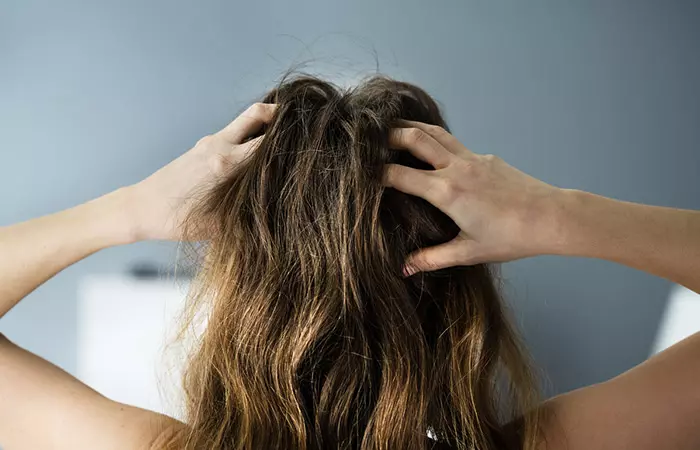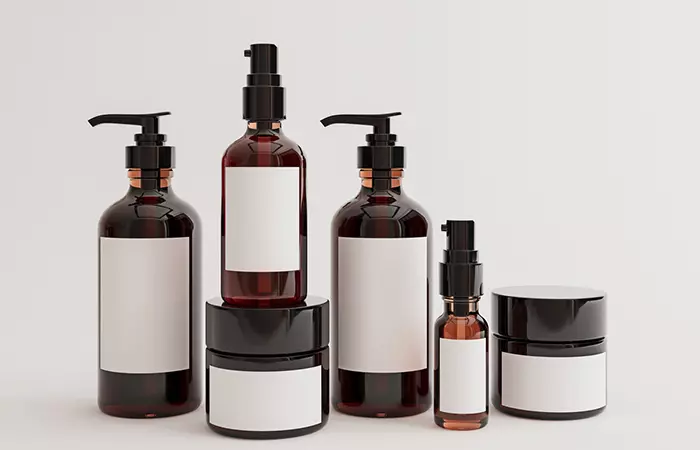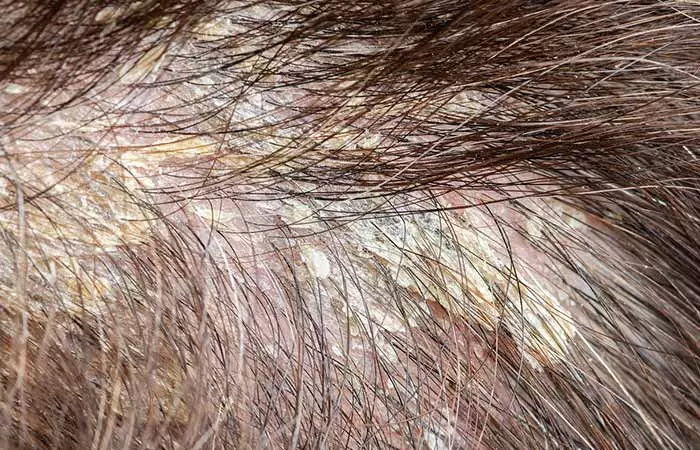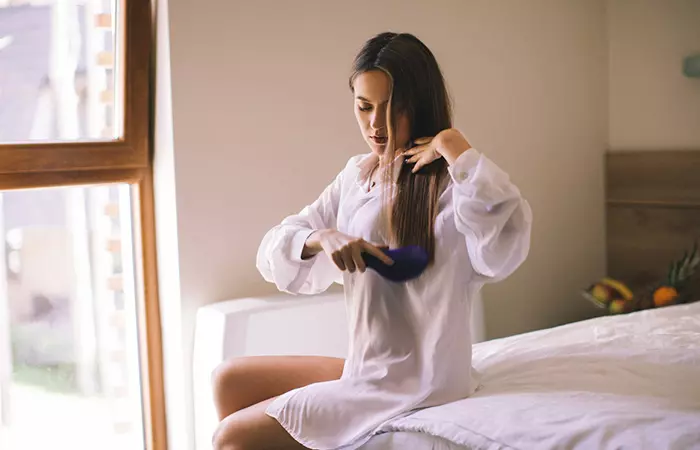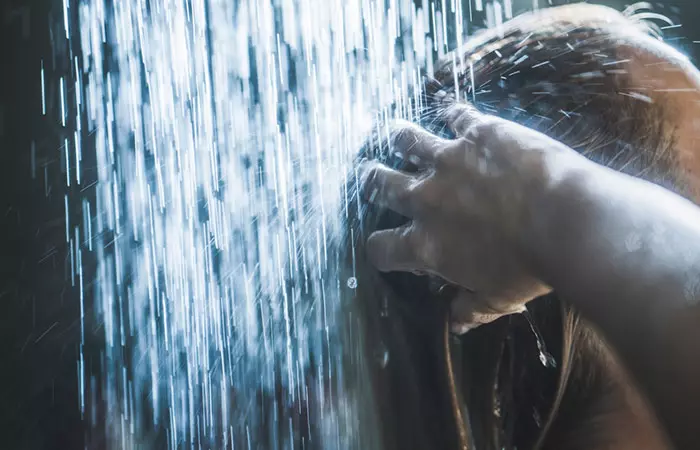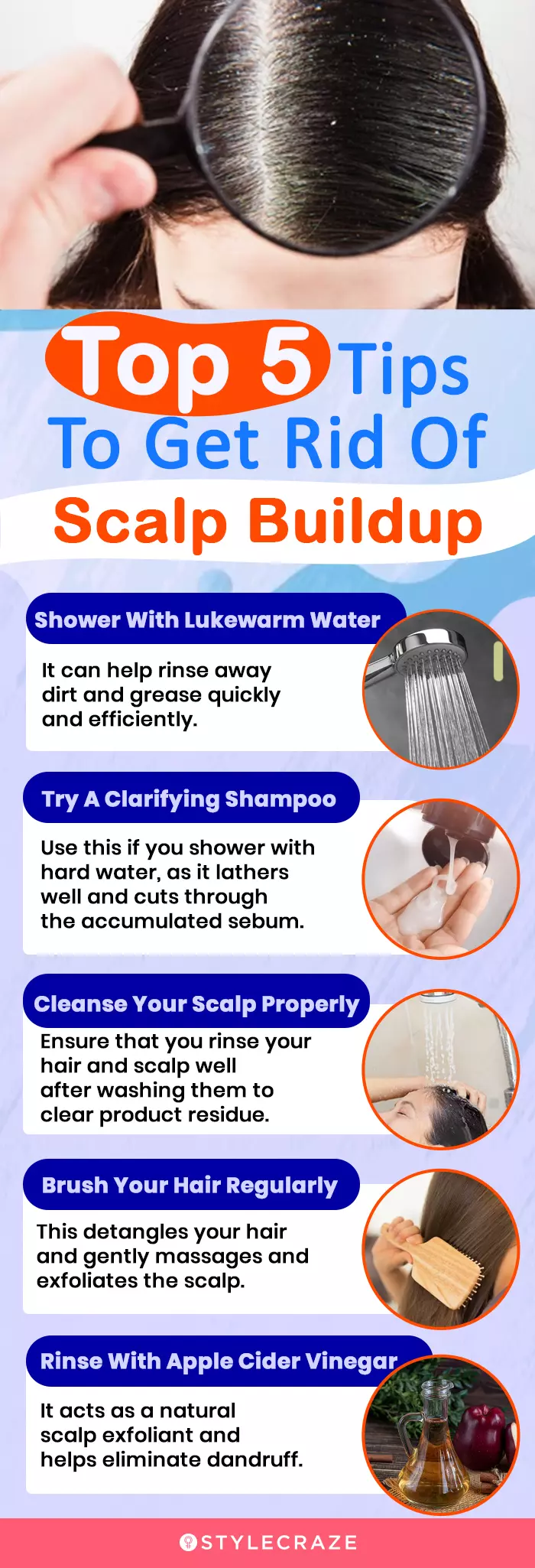This article describes how you can get rid of scalp buildup, the reasons behind it, and how to prevent it from occurring by following a healthy hygiene regimen. Take a look.
What Is Scalp Buildup?
Scalp buildup is the accumulation of excess oil (sebum), sweat, dead skin cells, and leftover hair care products on the scalp.
The flaky residue can be white or gray and is often confused for dandruff. The scalp can feel greasy or waxy due to the overproduction of natural oils. If left unchecked, scalp buildup can clog hair follicles and eventually lead to infections, folliculitis, scalp acne, and hair loss. Scalp buildup often results in symptoms similar to other scalp conditions such as seborrheic dermatitis, eczema, and psoriasis. These symptoms include an itchy scalp, redness or inflammation, dry scalp, and swelling.
Find out the causes of scalp buildup in the next section.
What Causes Scalp Buildup?
It is normal for dead skin cells and natural oils to accumulate on the scalp. However, excessive use of hair care products, improper hair rinsing, and skipping hair washing can cause scalp buildup and lead to various scalp problems that, if not treated on time, may cause further serious issues related to scalp. We have learnt the causes of scalp buildup. How does it look? Scroll down to find out.
What Does Scalp Buildup Look Like?
Scalp buildup looks similar to dandruff. It is a flaky residue that can be grayish-white. It may feel greasy and have an unpleasant odor. A few other common signs of scalp buildup include itchy scalp, dull hair, increased hair shedding or breakage, and difficulty in absorbing hair products. Sometimes, dandruff also contributes to scalp buildup.
Removing scalp buildup is simple. We have discussed it in the following section.
How To Get Rid Of Scalp Buildup
a. Apple Cider Vinegar: Anecdotal evidence suggests that following natural scalp treatments with apple cider vinegar rinse or baking powder in the shampoo can help remove scalp build up. It is widely believed that these ingredients exfoliate the scalp by dissolving product residue. However, remember, you can only try these natural remedies if there is no inflammation on the scalp. b. Green Tea Rinse: Research shows that applying green tea extract to the scalp diminishes excess oiliness on the scalp, making it a reliable method for eliminating buildup (1). Simply, steep a bag of green tea in a glass of hot water, then allow it to cool. After shampooing and conditioning your hair, pour the cooled tea all over your scalp and hair. Gently massage it in and leave it on for a few minutes before rinsing it off. c. Yogurt Hair Mask: According to research, altering the scalp’s bacterial equilibrium through the promotion of Propionibacterium while inhibiting Staphylococcus can be a beneficial strategy for dandruff reduction (2). Yogurt is a nourishing ingredient that encourages the growth of Propionibacterium (3). Also, the probiotics in it may aid in maintaining a balanced scalp pH by regulating sebum production (4). Mix some plain yogurt with honey, apply it to your hair, leave it on for 20-30 minutes, and rinse it off. Exfoliation is a key step in scalp health, and knowing how to exfoliate your scalp can ensure a healthy scalp, leading to healthy hair. Hence, it is important to maintain this practice regularly to keep your scalp healthy. While treating scalp buildup is good, preventing it is even better. Let us explore the various ways you can prevent scalp buildup altogether.
How To Prevent Scalp Buildup
The best way to treat scalp buildup is to stop it before it starts. If you are prone to scalp build up, you may take these preventive measures:
Avoid Excess Use Of Products: Haircare products are a great way to style and care for your hair. However, use them prudently, as excess use can lead to the accumulation of scalp residue and even make your hair dull Always follow the manufacturer’s instructions carefully for effective results.
A blogger going by the username Rabadger wrote in her blog about how she went seven years without shampoo, embracing a water-only routine. She writes, “My transition consisted of largely WO every 4-5 days with raids of the kitchen cupboard sometimes supplementing it (egg yolk, vinegar, tea, lemon juice etc etc), and henna every 6 weeksish. I found that my scalp became itchy about 2 weeks in and there was loads of buildup of grease and skin. I developed an unpleasant head-scratching habit (i)”. But she also shares that after months her hair started to become more socially acceptable and look much better than before.
Keep Your Hair Healthy: Harsh chemicals and pollution can make your hair dirty and greasy. Wash it regularly to keep your scalp clean. Washing your hair after a workout to get rid of the sweat and grime on the scalp can also help.
Maintain A Healthy Hair Routine: Have a dedicated hair care routine suitable for your hair type. It will also help improve hair growth and prevent further hair damage.
Most often, scalp residue is neglected in its initial stages. Untreated scalp buildups can cause issues.
Risk Factors Of Scalp Buildup
Scalp buildup can clog hair follicles and become a breeding ground for scalp microbes, leading to infections and dandruff. The inflammation in the follicles can cause folliculitis and scalp acne. Clogged hair follicles can also lead to hair loss.
Poor scalp health and lack of hydration can irritate the skin and make you vulnerable to other scalp conditions such as psoriasis and eczema.
Why is my scalp oozing? When your scalp begins to ooze, it is usually due to a sore on the scalp that has gotten irritated, inflamed, or popped. As a result, it’s crucial to identify the kind of sores and address the underlying cause. Numerous factors can cause sores to appear on the scalp. The most prevalent ones include psoriasis and eczema. Certain products can ease the symptoms, including specialized shampoos, medications, and creams. What are hard bumps on the scalp? Many conditions can produce hard bumps on your scalp, from less serious ones like a brief allergic reaction to more serious ones like skin cancer. Generally, most scalp bumps go away on their own with mild scrubbing and a shower rinse. However, you may need to consult a dermatologist if you have bumps that are persistent or recurring. Should I wash my hair every day if I have seborrheic dermatitis? Yes, washing your hair every day is the most crucial thing you can do to treat and prevent seborrheic dermatitis. This might be an issue for many people, but if seborrhea is to be treated, daily hair washing is crucial. Until your symptoms reduce, wash your hair every day with a medicated shampoo. After that, start shampooing once or twice per week. Since seborrheic dermatitis can be itchy, you may also use some home remedies for itchy scalp in the guidance of a medical expert to help manage the condition effectively. Learn how to deep cleanse your scalp and remove product buildup for healthy hair growth with this easy-to-follow scalp scrub tutorial. Do not miss watching it.
